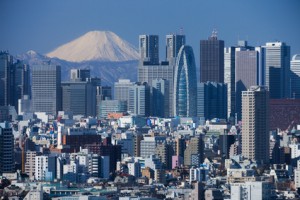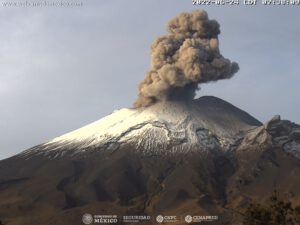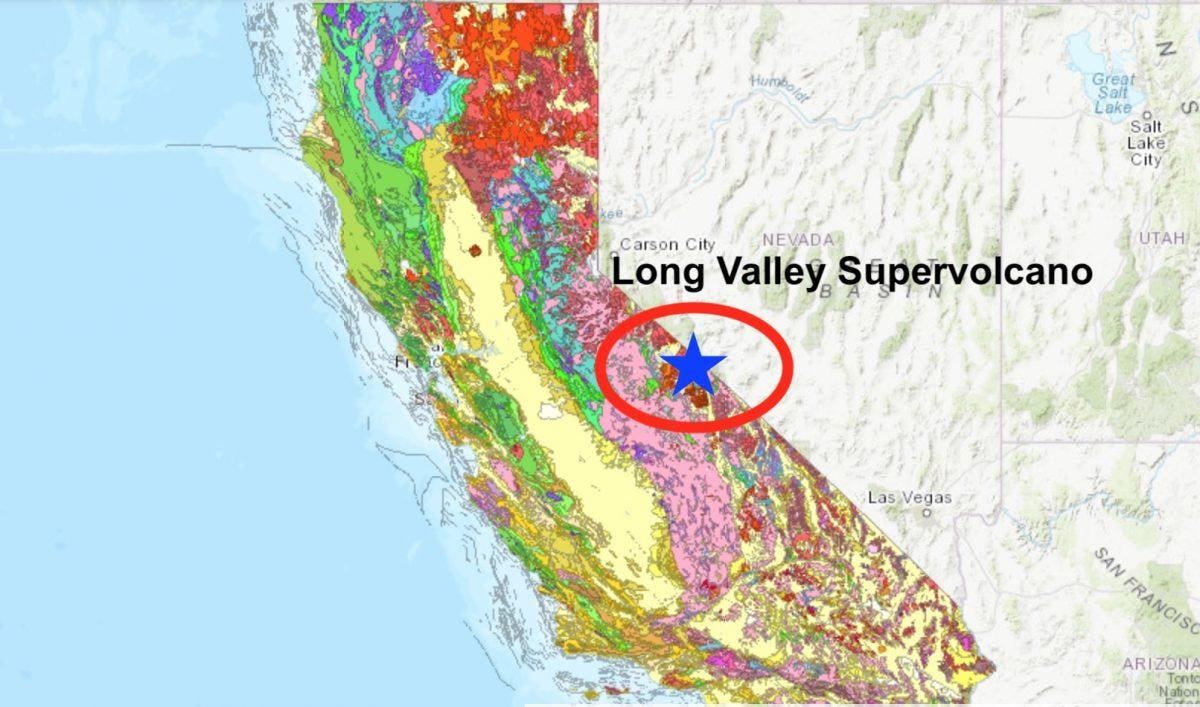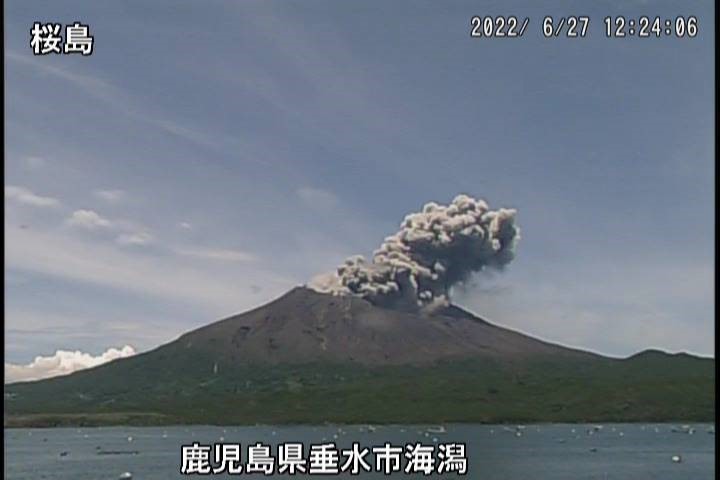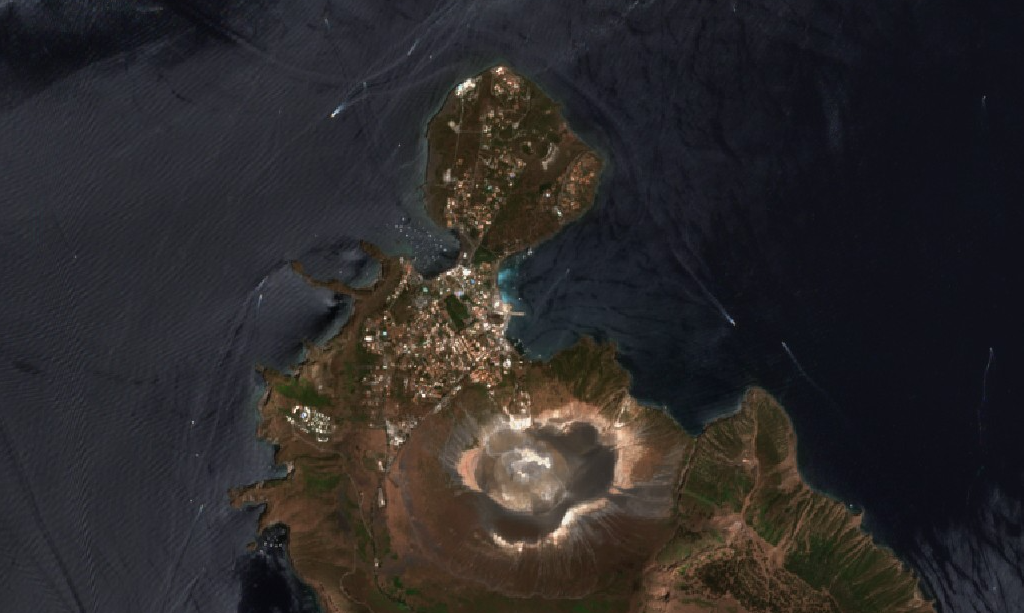XPan
The Living Force
Reventador Volcano, Ecuador
22 June 2022 • Height: 3562 m / 11686 feet
Vulkane.net writes following about the Ecuadorian volcano, one of the most active volcanoes in the region. I made a location map in order for you to see where the volcano is located.

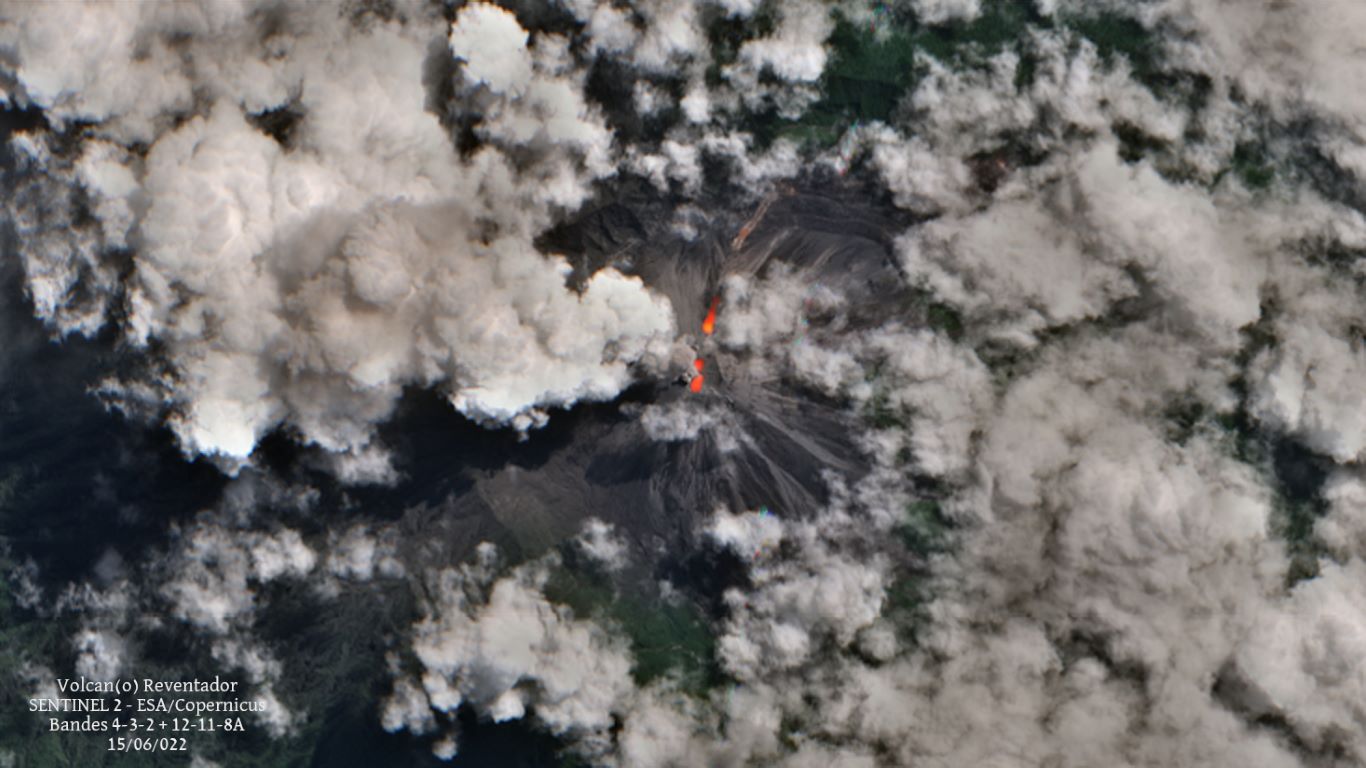
 The Reventador is effusive and explosively active
The Reventador is effusive and explosively active
 Volcanic ash rises to 4900 m altitude
Volcanic ash rises to 4900 m altitude
 The alarm status is set to "orange
The alarm status is set to "orange
Reventador with ash cloud and lava flow
State: Ecuador | Coordinates: -0.081, -77.67 | Eruption: Volcanic

In Ecuador, Reventador continues to be active, producing ash clouds that, according to VAAC, rise to an altitude of 4900 m and drift towards the northwest. In addition, a satellite image was taken last week that shows not only an ash cloud, but also a lava flow. It flows over the northern flank of the volcano and reaches the base of the cone. The cone is located in a caldera and can only be reached by a long walk.
Reventador is located in the Andes, on the edge of the Amazon basin, and is often shrouded in clouds. Accordingly, clear views of the volcano are rare, especially from space. Therefore, the photo is already a small sensation. It shows the volcano during an eruptive peak phase, which has already subsided somewhat in recent days. Nevertheless, Reventador regularly emits ash clouds. Since 20 June, 7 VONA warnings have been issued. On this day, 96 seismic eruption signals and 83 long-period earthquakes were detected.
The volcano is monitored by IGPEN. There are seismographs and webcams available online, but they transmit their data only sporadically. On a thermal image that I caught for a few moments, the heat signature of the lava flow was still visible. MIROVA detects moderate thermal radiation with 13 MW power. The alarm status is set to "orange". Humans are not endangered at the moment, as Reventador is located remotely.
About Reventador Volcano
The 3562 m high Reventador is one of the most active volcanoes in Ecuador. During a strong eruption it lost its summit and a horseshoe-shaped caldera was formed. A new cone formed on its rim, from which the current eruptions are taking place. Since 1541, 26 strong eruptions with a VEI between 2 and 4 have been documented.
22 June 2022 • Height: 3562 m / 11686 feet
Vulkane.net writes following about the Ecuadorian volcano, one of the most active volcanoes in the region. I made a location map in order for you to see where the volcano is located.

Vulkan-News 22.06.22: Reventador - Vulkane Net Newsblog
Der Reventador ist effusiv und explosiv tätig. Vulkanasche steigt bis auf 4900 m Höhe auf. Der Alarmstatus steht auf "orange"
www.vulkane.net
Reventador with ash cloud and lava flow
State: Ecuador | Coordinates: -0.081, -77.67 | Eruption: Volcanic
In Ecuador, Reventador continues to be active, producing ash clouds that, according to VAAC, rise to an altitude of 4900 m and drift towards the northwest. In addition, a satellite image was taken last week that shows not only an ash cloud, but also a lava flow. It flows over the northern flank of the volcano and reaches the base of the cone. The cone is located in a caldera and can only be reached by a long walk.
Reventador is located in the Andes, on the edge of the Amazon basin, and is often shrouded in clouds. Accordingly, clear views of the volcano are rare, especially from space. Therefore, the photo is already a small sensation. It shows the volcano during an eruptive peak phase, which has already subsided somewhat in recent days. Nevertheless, Reventador regularly emits ash clouds. Since 20 June, 7 VONA warnings have been issued. On this day, 96 seismic eruption signals and 83 long-period earthquakes were detected.
The volcano is monitored by IGPEN. There are seismographs and webcams available online, but they transmit their data only sporadically. On a thermal image that I caught for a few moments, the heat signature of the lava flow was still visible. MIROVA detects moderate thermal radiation with 13 MW power. The alarm status is set to "orange". Humans are not endangered at the moment, as Reventador is located remotely.
About Reventador Volcano
The 3562 m high Reventador is one of the most active volcanoes in Ecuador. During a strong eruption it lost its summit and a horseshoe-shaped caldera was formed. A new cone formed on its rim, from which the current eruptions are taking place. Since 1541, 26 strong eruptions with a VEI between 2 and 4 have been documented.

